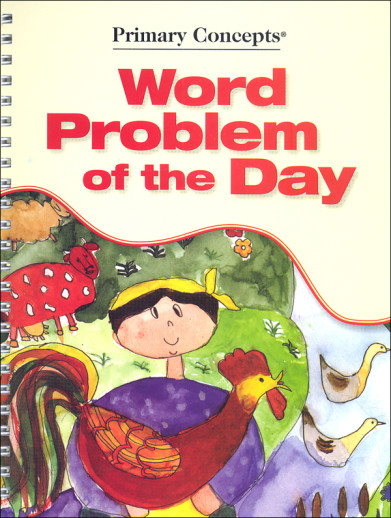Word problems are a fun way to build logic and comprehension skills. These particular problems focus on language rather than math. Children have to pay close attention to the wording and details to solve the problems. Introduce a problem a day as a warm up activity. Because these are made for young students, the vocabulary and situations are relatable and familiar, built around a family named the Wordly's. There is a performance assessment after every 7 problems, and 77 total problems (not counting the testing opportunities.) Here is a problem from the middle of the book called Pajama Drawer:
First is the word problem, "The youngest Wordly boy's dresser holds his pajamas, pants, & shirts. The dresser has 3 drawers. Each type of clothing is in a separate drawer. The middle drawer holds his shirts. His pants are in the bottom drawer. In which drawer are his pajamas? Then you talk about it, "Are his pants & pajamas in the same drawer? (no) How many drawers are there? (3) How many different types of clothing are there? (3) The next step is called picture it: (materials: paper & pencil) Draw 3 drawers. Draw to show where the shirts are. Draw where the pants are. Draw where his pajamas are. And finally, the solution: The pajamas are in the top drawer.
The performance assessments have this same format, the students are just doing it without any help from you. In the back is a page index where you can look up a certain skill such as time, money, shape, sequence, etc. The problems are short and sweet, as a warm up should be, but are enough to get your little learners thinking critically and actively. Spiral bound, sc, 6.5x8.5", 90pp ~Sara


